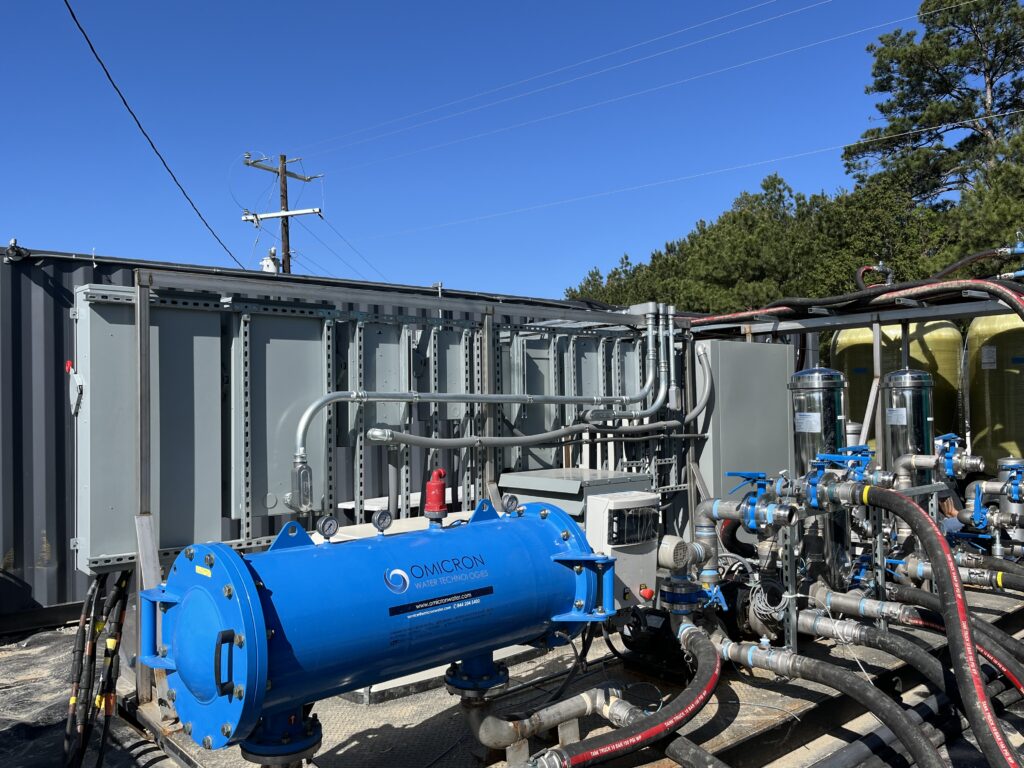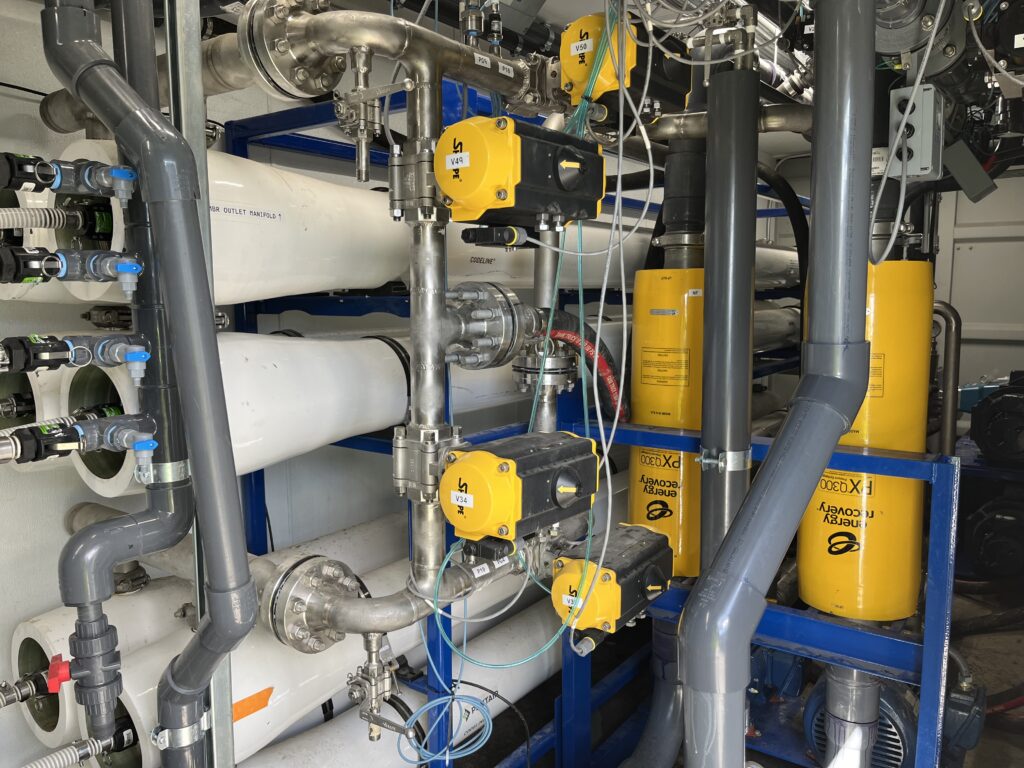It’s a nightmare come true for many landfills: The closest publicly owned treatment works (POTW) stops accepting your leachate.
Maybe it’s too contaminated.
Maybe they can take some, but not all of it.
Or maybe they simply jacked the price up too high to be economically feasible.
Regardless, when this happens to you, you’ll have two options. You could bite the bullet and rack up even more transportation costs by trucking your leachate to another POTW that may or may not take it. Or you could find a new way to manage your leachate.
And POTW regulations concerning discharge cleanliness standards, the amount of leachate POTWs are allowed to take and the concentration of contaminants in that waste continue to tighten, you likely will need to find a new way to manage your leachate.
The Atmos Leachate Treatment System (ALTS) is the alternative way of cleaning your leachate. It filters out contaminants by combining three technologies (ultra filtration, nano filtration and reverse osmosis), leaving you with clean water you can dispose of or reuse in your operations.

But is it right for your needs? Consider these three questions:
- How much leachate do you produce and how contaminated is it?
- What are you doing with your leachate now?
- Do you want to reuse or dispose your water?
How much leachate do you produce and how contaminated is it?
The quantity and quality of your leachate impacts the Atmos Leachate Treatment System’s efficacy at your landfill. Let’s look closer at each of these factors.
The amount of leachate you produce
In a 24-hour period, the ALTS processes between 2,000 and 200,000 gallons of leachate.
Thanks to the ALTS’ modular design, customizing the combination of technologies to meet your landfill’s needs is simple. Whether you only need to combat certain contaminants, require more modules to increase capacity or need less support to accommodate fewer gallons, we build the system to your specifications.
But how much leachate the ALTS cleans also depends on how dirty your leachate is to begin with.
Your contaminant load
If you’re interested in the ALTS, one of the first steps is sending us your raw leachate data. Once we understand your contaminant load and your goals, we can start designing a system that’s right for your landfill.
But don’t worry, we designed the ALTS to handle the worst of the worst. Here’s an example of the typical results you might see with the treatment system in place.
| Contaminant | Raw leachate | ALTS treated leachate | Contaminant reduction (%) |
| TOC | 30,800 mg/L | 48 mg/L | 99.8 |
| Oil/grease | 13 mg/L | 0 mg/L | 100 |
| TDS | 80,800 mg/L | 204 mg/L | 99.75 |
| Chloride | 9,280 mg/L | 28 mg/L | 99.7 |
| Acetone | 30,500 ug/L | 94 ug/L | 99.69 |
| Butanone | 16,200 ug/L | 0 ug/L | 100 |
| PFOS | 400 ppt | 1.52 ppt | 99.62 |
| PFOA | 1,060 ppt | Non detect | 100 |
| PFHxS | 151 ppt | Non detect | 100 |
| PFNA | 204 ppt | Non detect | 100 |
| PFBS | 424 ppt | Non detect | 100 |
If you only need to reduce the amount of ammonia in your leachate, consider Atmos bioaugmentation. This natural, cost-effective fix uses microorganisms to lower ammonia nitrate levels until they’re within the acceptable range for a POTW or other treatment method.
What are you doing with your leachate now? Is it actually working for your landfill’s sustainability goals?
Trucking leachate to the nearest POTW tops the list of the most common leachate management methods, but other strategies exist. And in certain circumstances, sticking with those solutions could make more sense for your landfill.
Ponds and other evaporators
Another common management method is to dig a large pond to collect the leachate for eventual evaporation. This process takes time and performance often depends on the weather. For example, a rainy season could slow evaporation down even further. Similarly, evaporators that atomize the leachate may be considered, speeding up the natural evaporation that happens in ponds.
Landfills often run into capacity issues with both of these methods.
Reverse osmosis on its own
The ALTS’ third and final module uses reverse osmosis to filter out the finest contaminants, like PFOS and PFAS. And while R/O excels at removing those, it often handles larger contaminants poorly. These larger contaminants, such as dissolved solids, tend to clog the expensive R/O membranes, resulting in slower volumes and more frequent costly R/O membrane replacements.
Much like ponds and other evaporators, reverse osmosis-only solutions can have a much smaller capacity than the Atmos Leachate Treatment System.
On-site wastewater treatment plants
By building the equivalent of your own POTW at your landfill, you could process your own leachate without having to worry about trucking and other additional fees. However, facilities like this take years and $4-20 million in CapEx to build. For many landfills, it’s just not an option.
In contrast, the ALTS requires no capital expenditure, and we can design, build and install it in 12 weeks, which makes it an effective solution for landfills of any size.
Bioreactor or anaerobic digestors
As the most expensive option, any kind of microbial-based solution becomes a massive undertaking that requires a high quantity of leachate and a lot of open space. But it also results in low treatment cost. If your landfill has a solution like this in place, you likely don’t need an additional leachate management system.
Direct access to a POTW
Finally, while rare and becoming rarer, some landfills have standing agreements with their local POTWs to pipe leachate directly to the facility.
If your landfill lucked out with a sweetheart deal like this — or operates near enough to a POTW to have minimal transportation costs — this is the more cost-effective solution. After all, if a treatment facility accepts your raw leachate as is, what’s the point in cleaning it?
But arrangements like this are vanishing. Just because this option exists, doesn’t mean it will six months to a year down the road as POTWs increase their prices and discontinue service for landfills with high contaminant loads.
If you use any of these solutions, ask yourself these questions
Are you keeping up with leachate production?
Are you getting your intended results?
If you answered no to either, a two-pronged approach — or a new method entirely — may be right for your operations. We’ve implemented the ALTS as a full-scale solution in some cases, but also as a supplementary strategy when necessary.
It may feel like an expensive, redundant hassle to add another leachate management system if you already have a capital-intense one in place. But if you aren’t seeing the results you need, you may need another option.

Do you want to reuse or dispose your water
How clean you need your leachate to be depends on what you want to do with the water.
After the Atmos Leachate Treatment System filters your leachate’s contaminants out, you have many sustainable options for what you do with the water, including:
- Dust control
- Atmos Cover ADC
- Washing trucks
- Direct land application
- Direct discharge
Your goals impact which permits you need from the EPA or your county. Our team of experts can guide you through this process and design your ALTS to meet the necessary requirements.
For example, NDPES permits for direct discharge into U.S. waters come with a plethora of red tape, but permits for direct land application for uses that stay on site (such as for crop irrigation) aren’t as strictly controlled.



